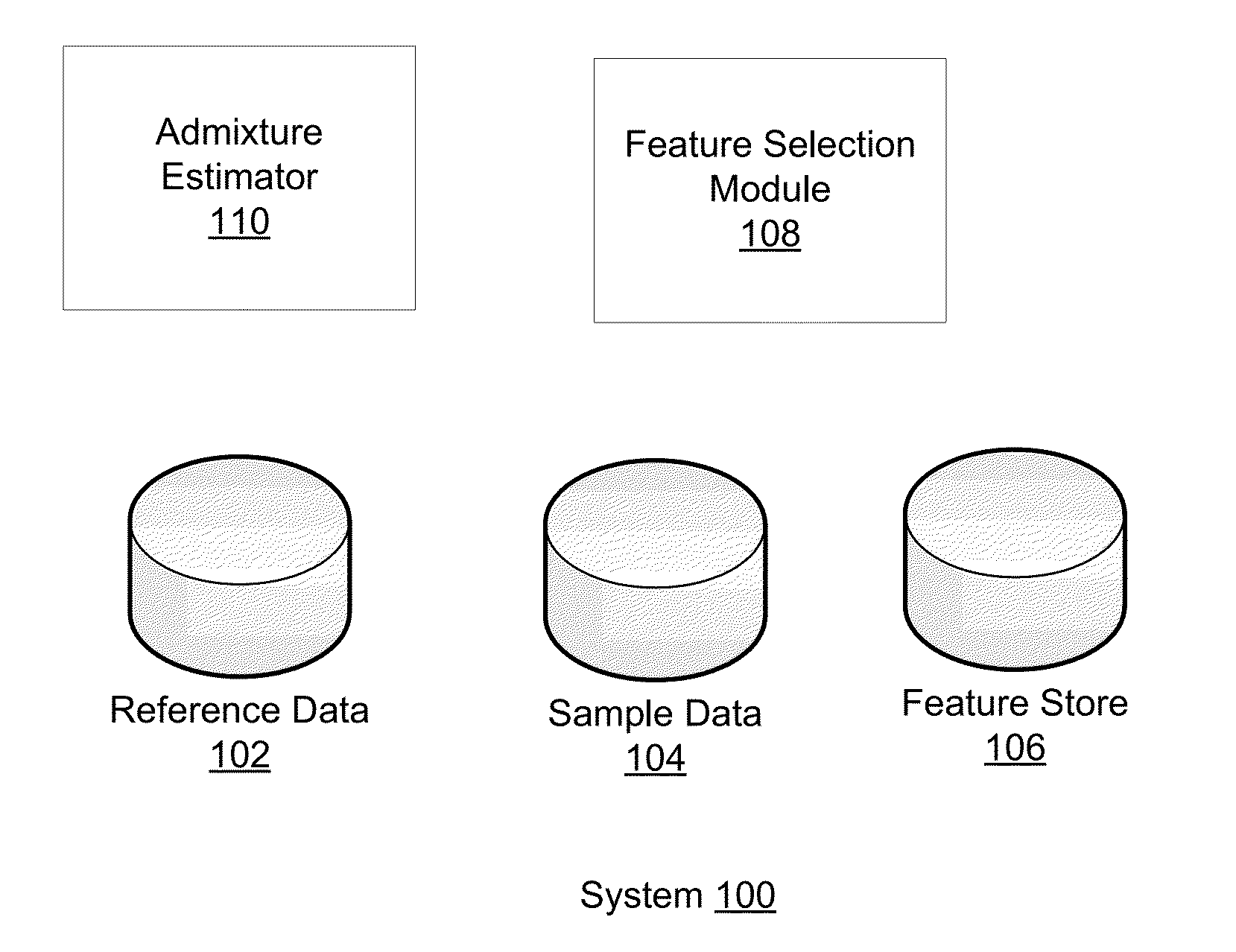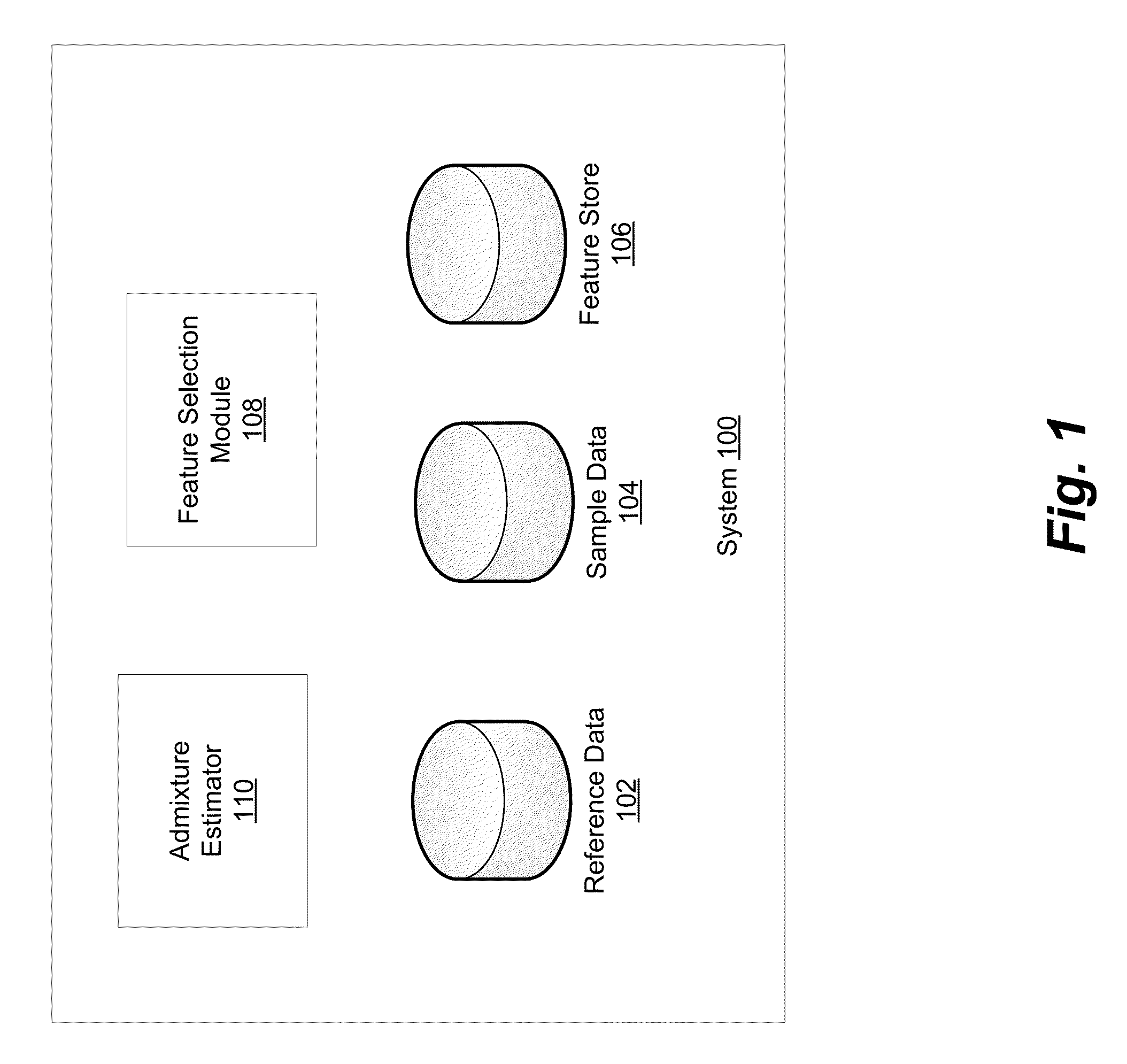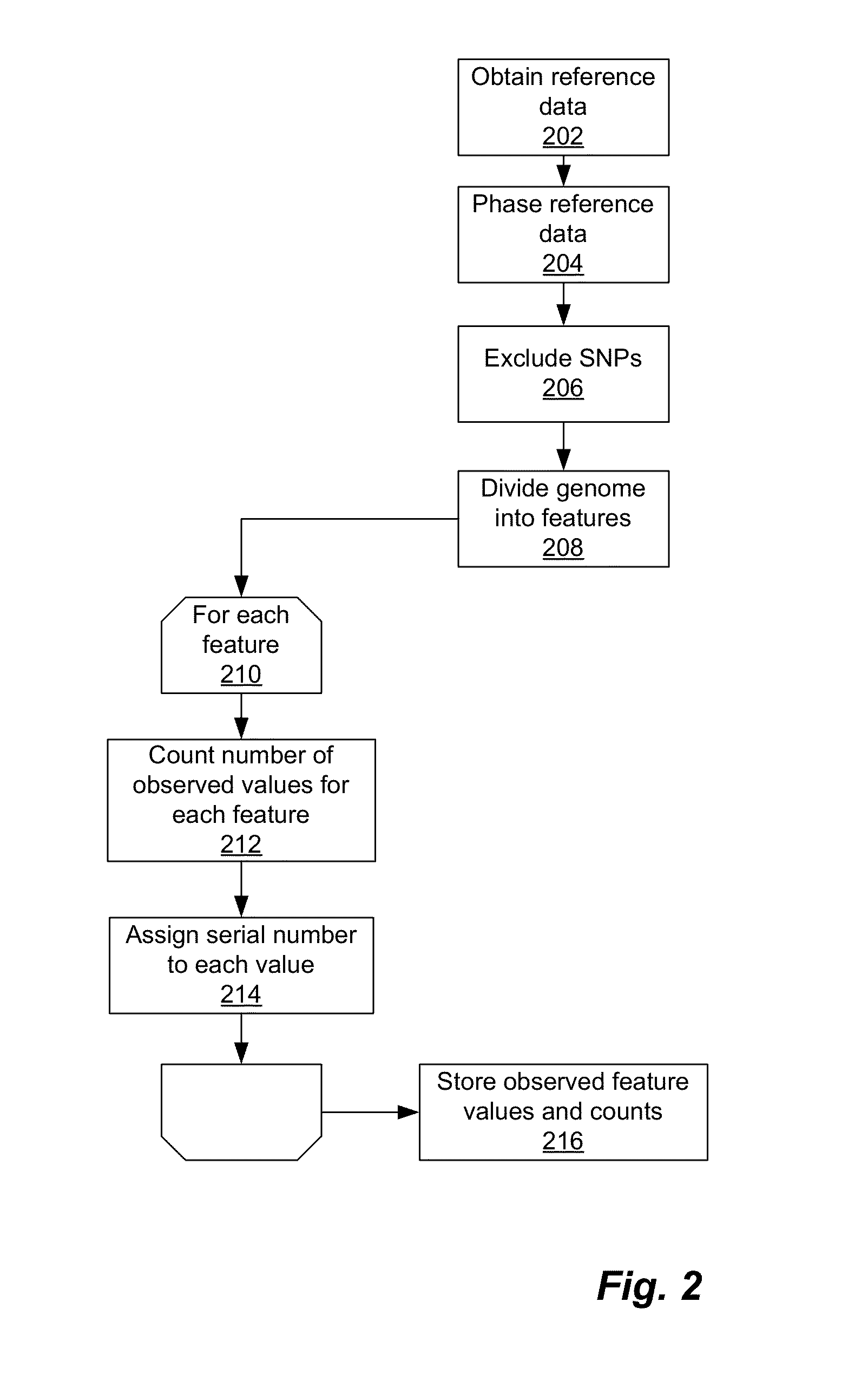Using Haplotypes to Infer Ancestral Origins for Recently Admixed Individuals
a technology of haplotypes and ancestral origins, applied in the field of using genetic data to infer ancestral origins, can solve problems such as reducing assignment accuracy and particularly problemati
- Summary
- Abstract
- Description
- Claims
- Application Information
AI Technical Summary
Benefits of technology
Problems solved by technology
Method used
Image
Examples
Embodiment Construction
[0014]FIG. 1 is a block diagram of a system 100 for identifying ancestral origins of individuals in accordance with one embodiment. System 100 includes a reference data store 102, a sample data store 104, a feature store 106, a feature selection module 108 and an admixture estimator 110. Each of these components is described further below.
[0015]System 100 may be implemented in hardware or a combination of hardware and software. For example, system 100 may be implemented by one or more computers having one or more processors executing application code to perform the steps described here, and data may be stored on any conventional storage medium and, where appropriate, include a conventional database server implementation. For purposes of clarity and because they are well known to those of skill in the art, various components of a computer system, for example, processors, memory, input devices, network devices and the like are not shown in FIG. 1.
[0016]Reference data store 102 stores ...
PUM
 Login to View More
Login to View More Abstract
Description
Claims
Application Information
 Login to View More
Login to View More - R&D
- Intellectual Property
- Life Sciences
- Materials
- Tech Scout
- Unparalleled Data Quality
- Higher Quality Content
- 60% Fewer Hallucinations
Browse by: Latest US Patents, China's latest patents, Technical Efficacy Thesaurus, Application Domain, Technology Topic, Popular Technical Reports.
© 2025 PatSnap. All rights reserved.Legal|Privacy policy|Modern Slavery Act Transparency Statement|Sitemap|About US| Contact US: help@patsnap.com



